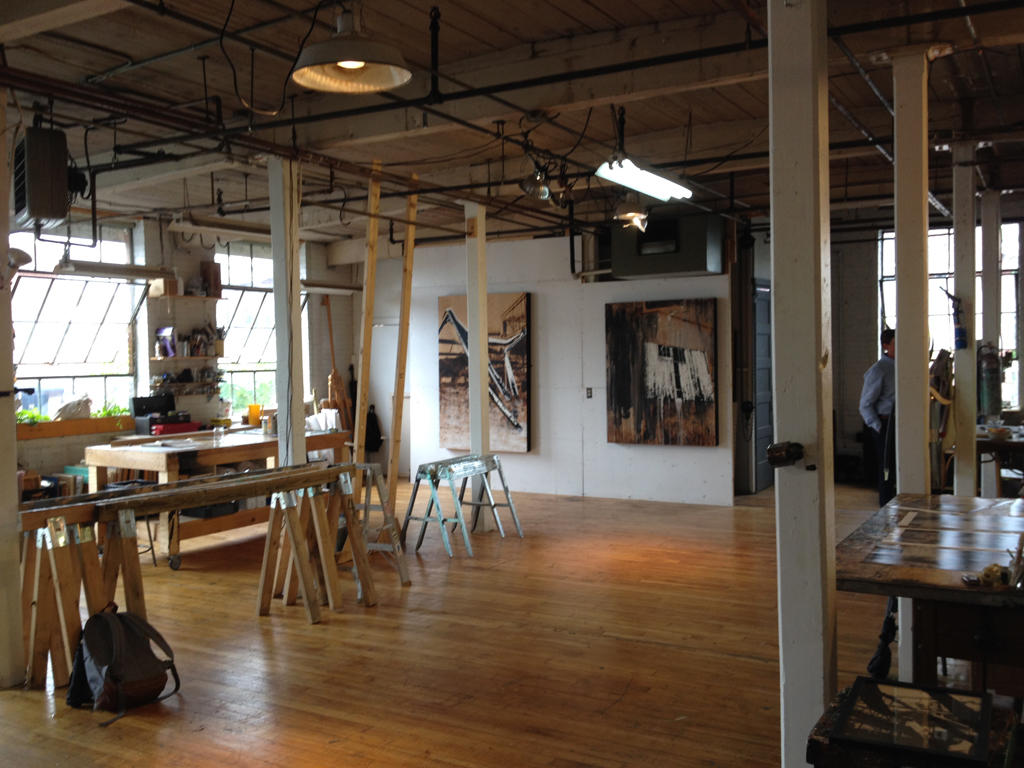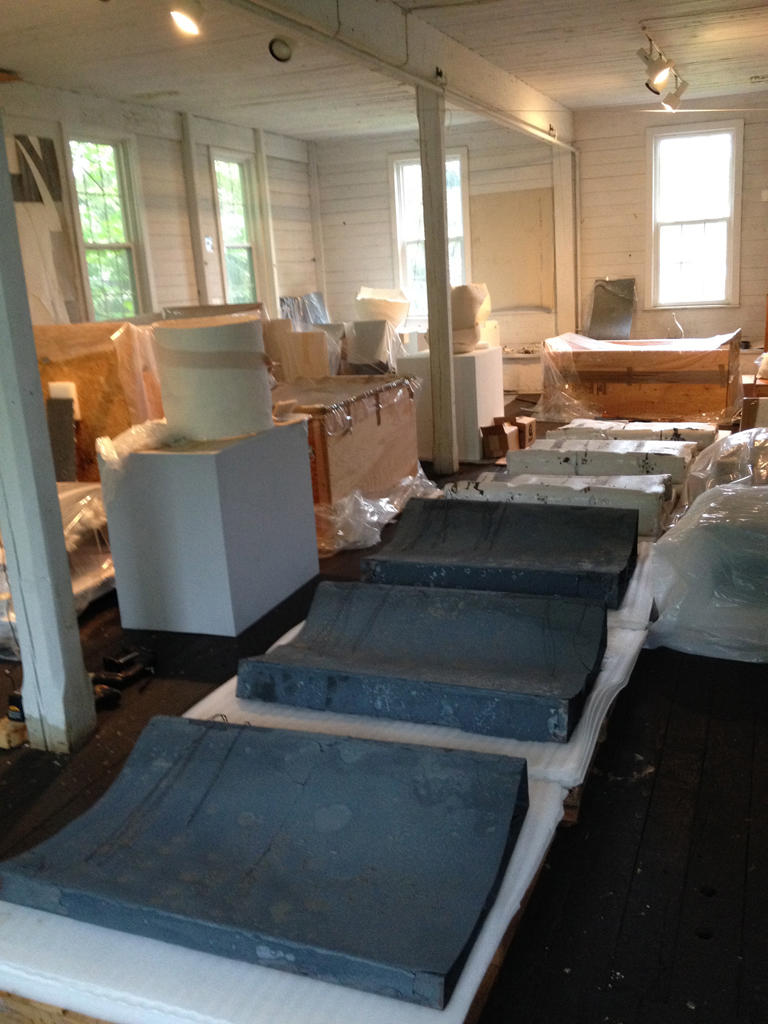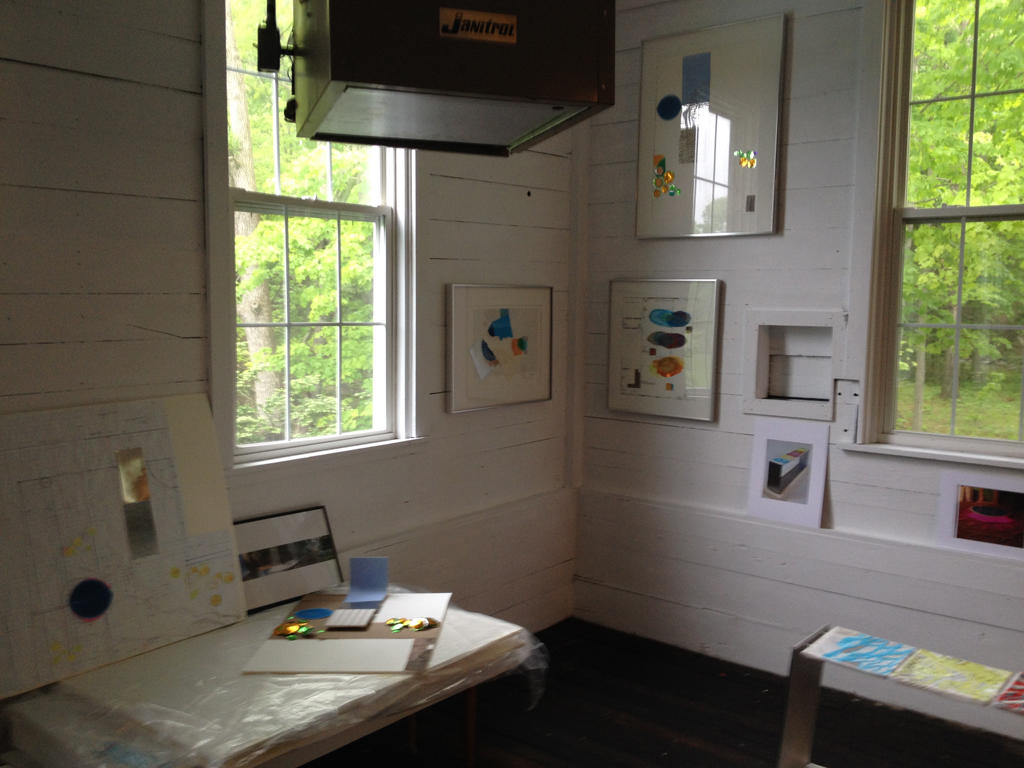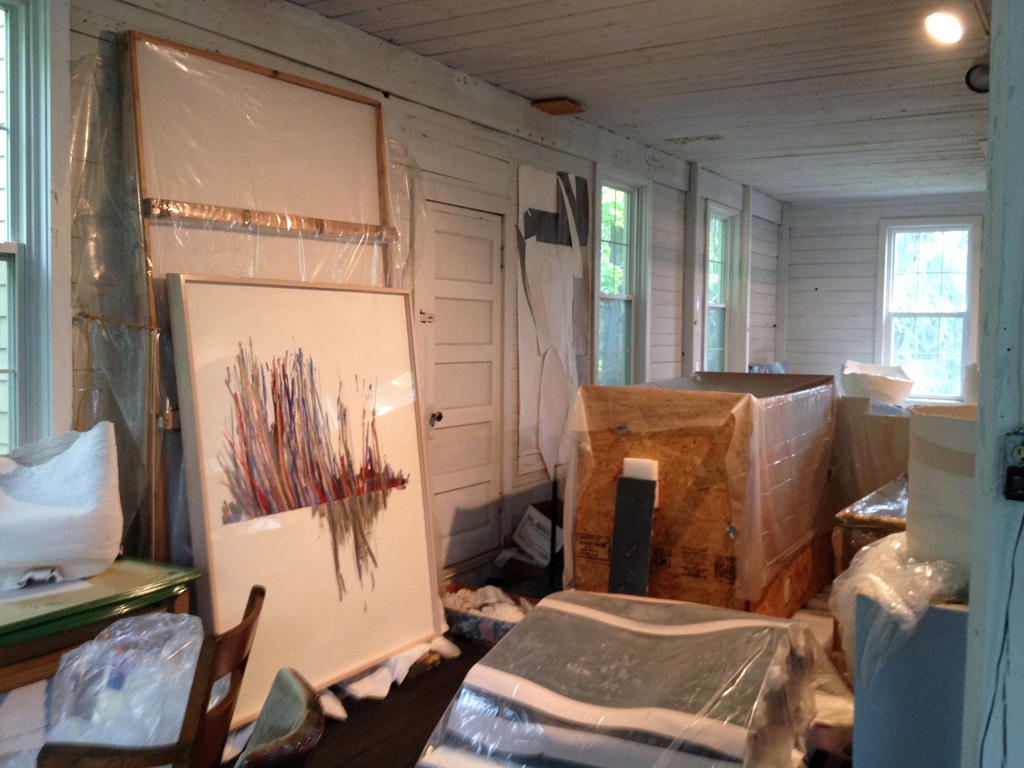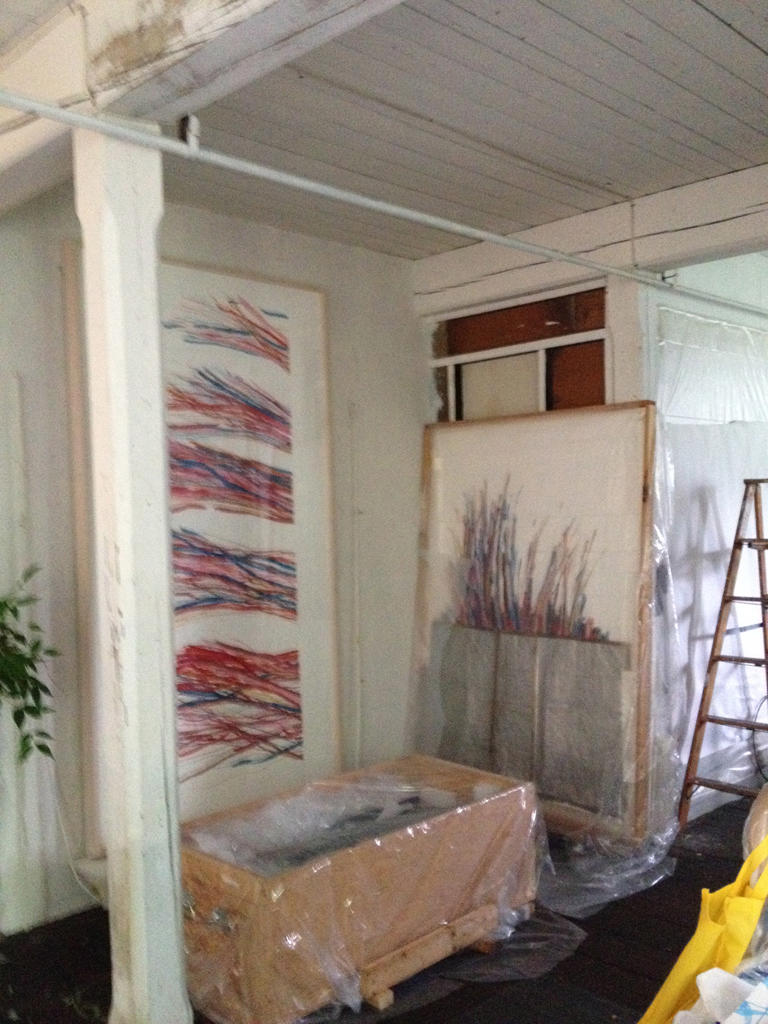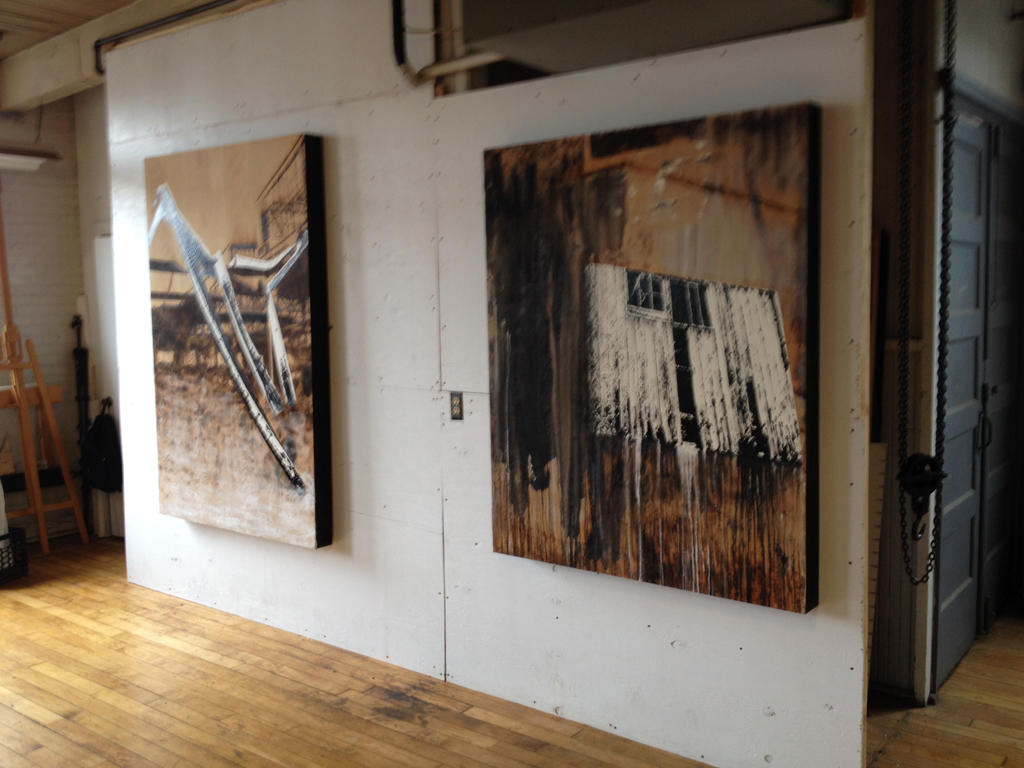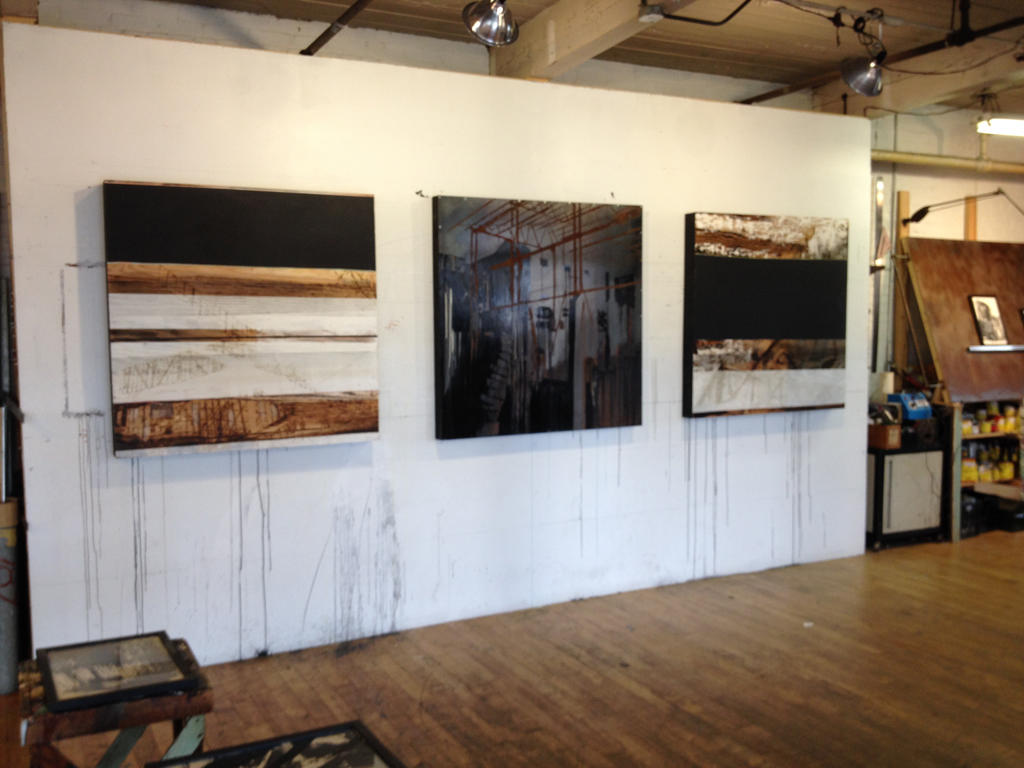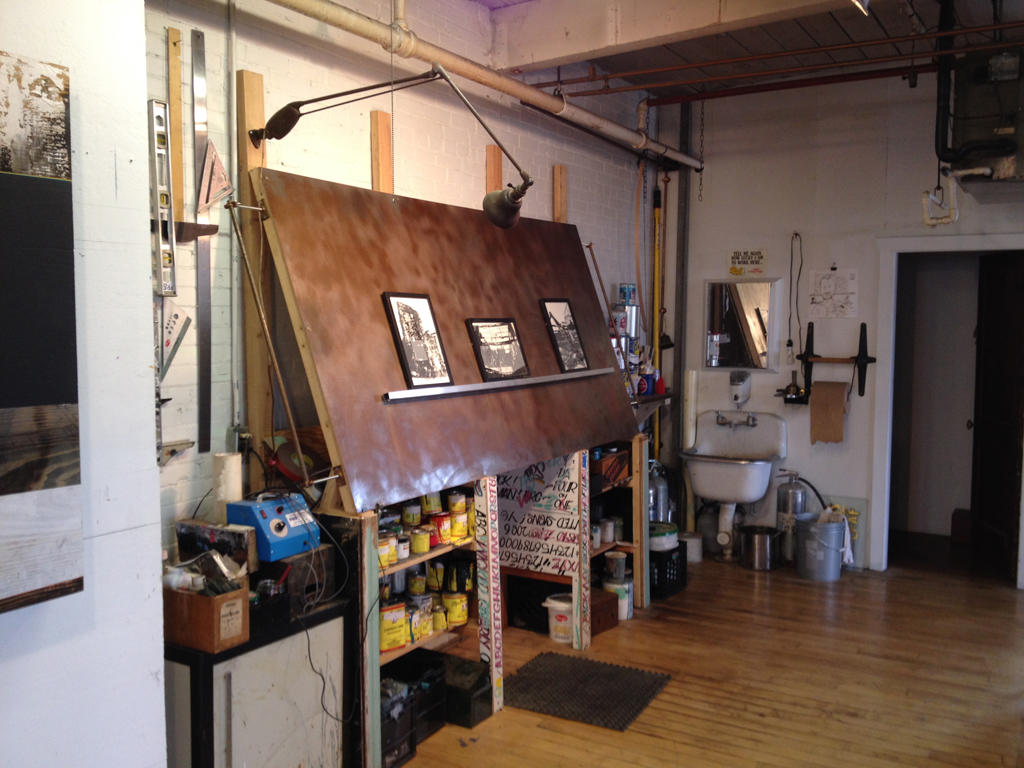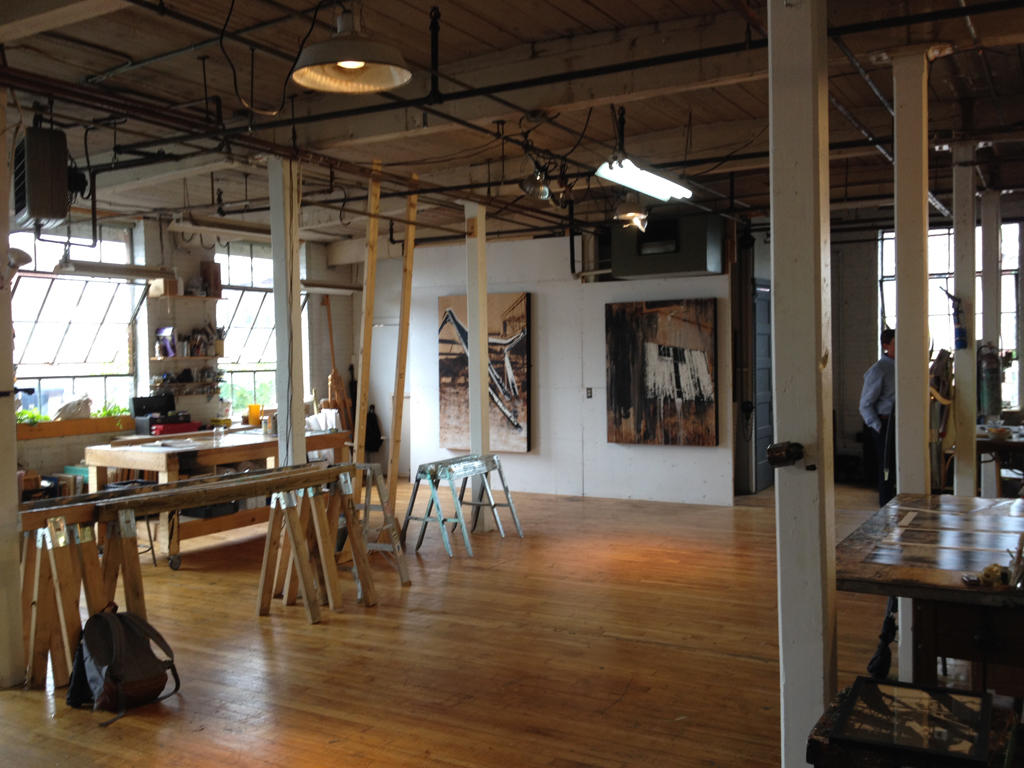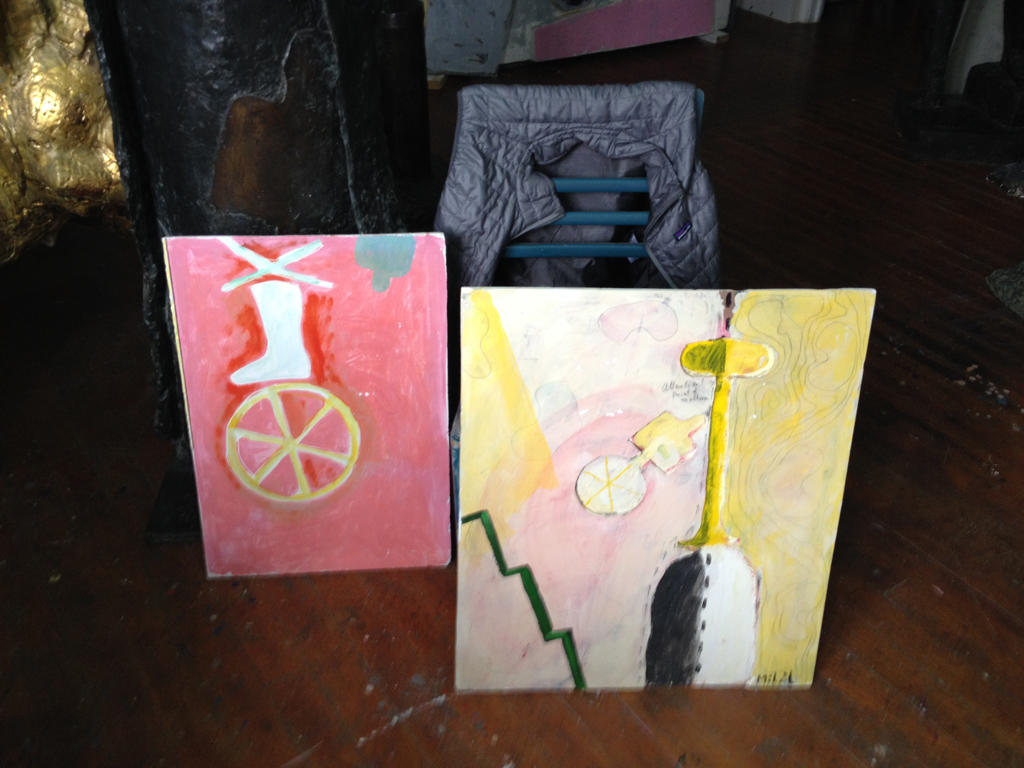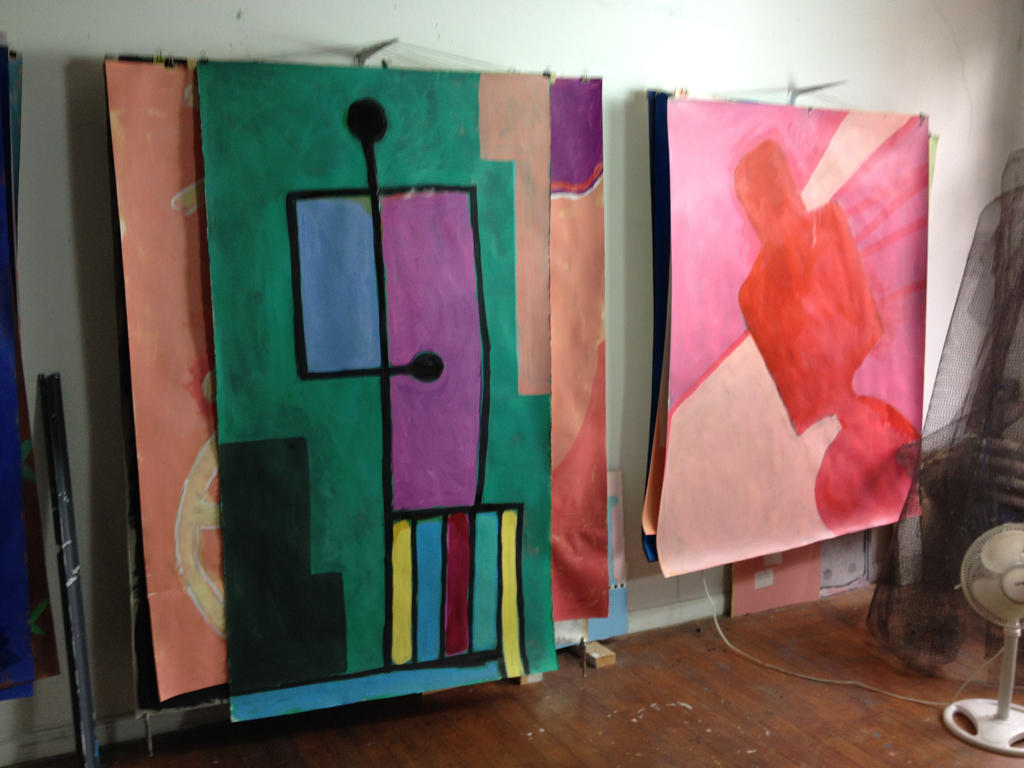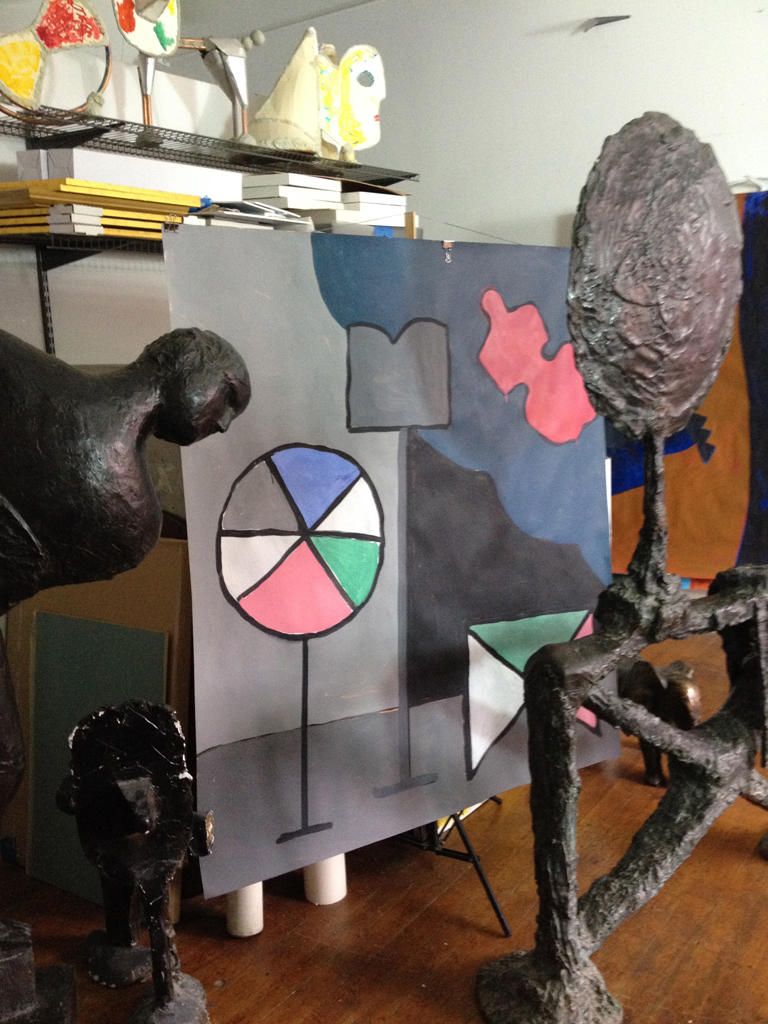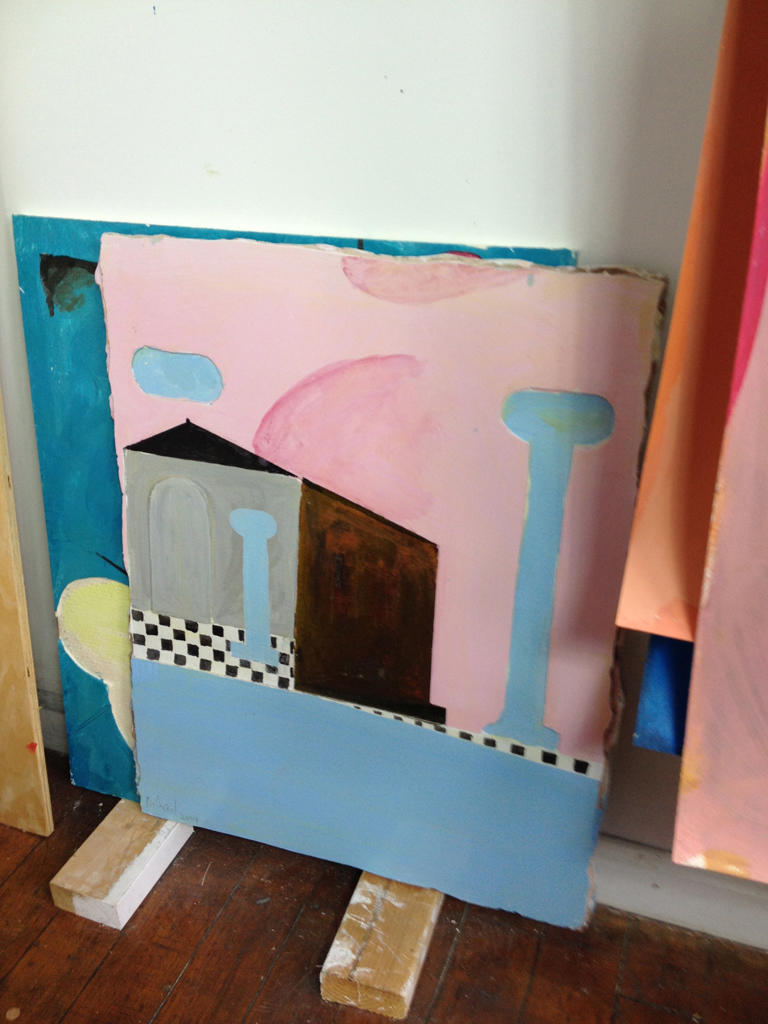In this series, RISD Museum curator Dominic Molon considers the importance and setting of the studio, and calls on Rhode Island artists.
If asked to provide a visual description of an “artist,” most people would describe a person in a studio surrounded by the tools of their trade. The studio plays a key role in providing the mise-en-scène both in artists’ own representations of themselves and other practitioners, and in the mass media’s depiction of artists—including Gene Kelly’s romantically struggling expatriate, Jerry Mulligan, in An American in Paris (1951) and trust-fund feminist Maude Lebowski in The Big Lebowski (1998). This perception persists despite the increasing tendency of artists to function in a manner requiring little more than a laptop and a smartphone to develop projects to be realized elsewhere.
That said, the majority of today’s artists inhabit work spaces that range from the small room Jerry dedicates to painting in his Parisian apartment to Maude’s theatrical factory somewhere in L.A. A personal fascination changing historical understanding of this space culminated in the 2010 exhibition Production Site: The Artist’s Studio Inside-Out which I organized for the Museum of Contemporary Art, Chicago. In addition to the work of nine international artists that proposed various aesthetic interpretations of the studio, it included a timeline of images that chronicled the shifts and continuities in artists’ workplaces—from the solitude characterizing Vermeer’s practice in the 16th century and Lee Bontecou’s in the 20th, to the apprentice-development model stretching from the Renaissance to contemporary figures such as Olafur Eliasson and Jeff Koons.
Suzanne Volmer
Lincoln, RI
Shawn Gilheeney
Providence, RI
Mihail Simeonov
Pawtucket, RI
